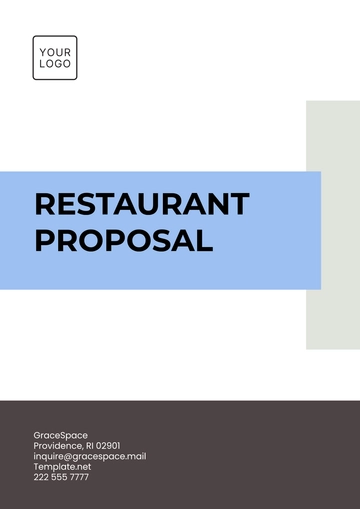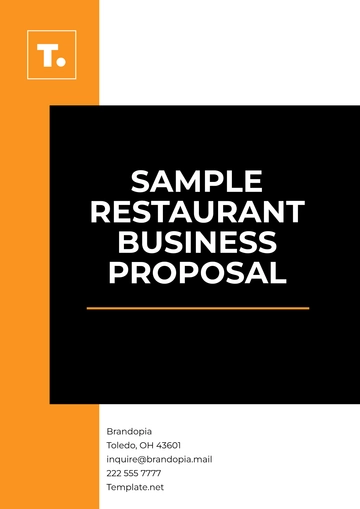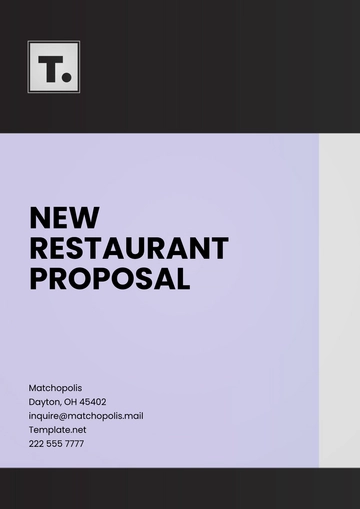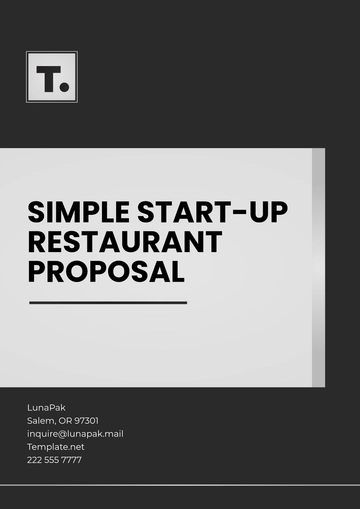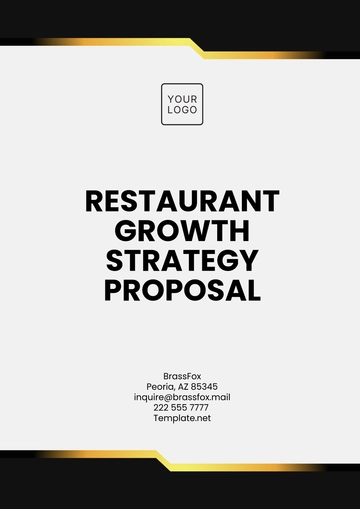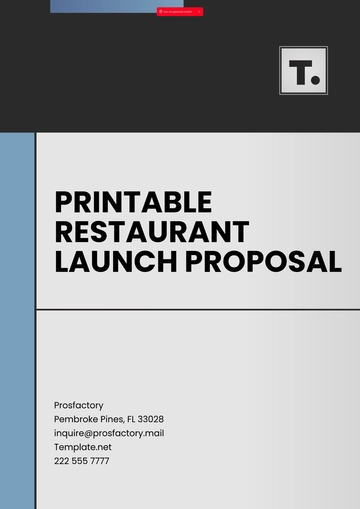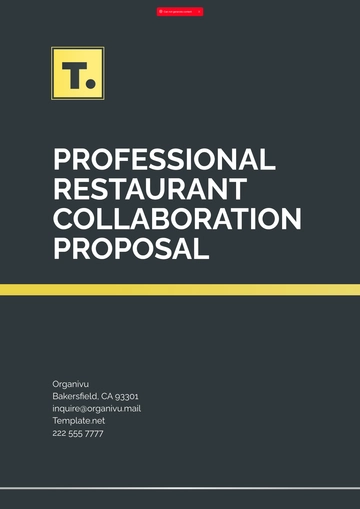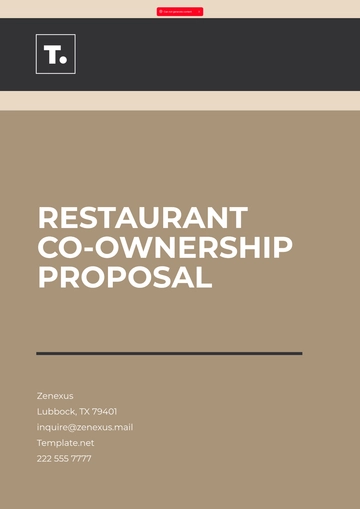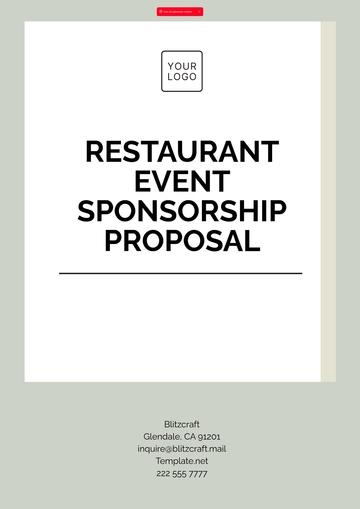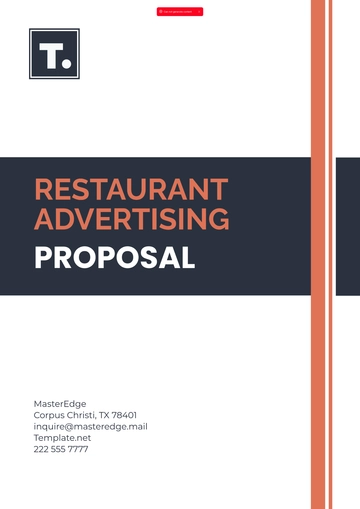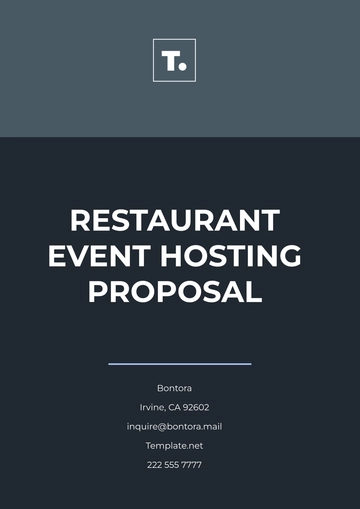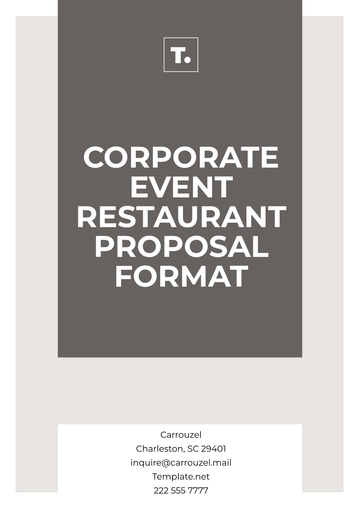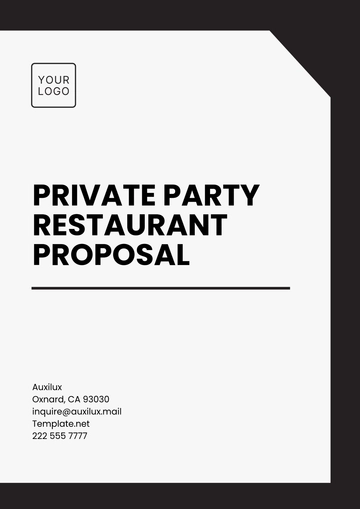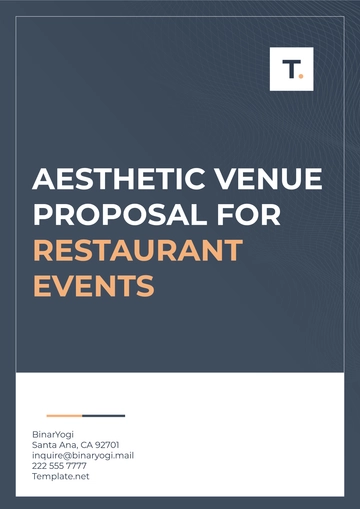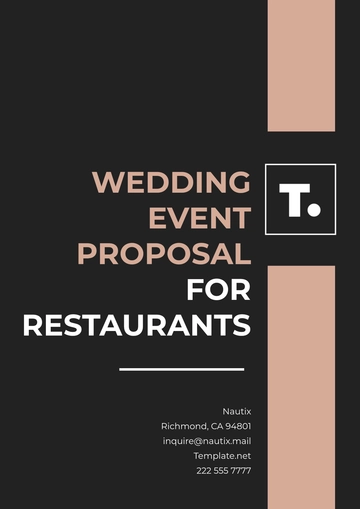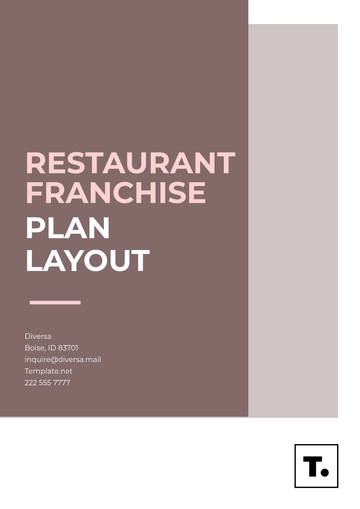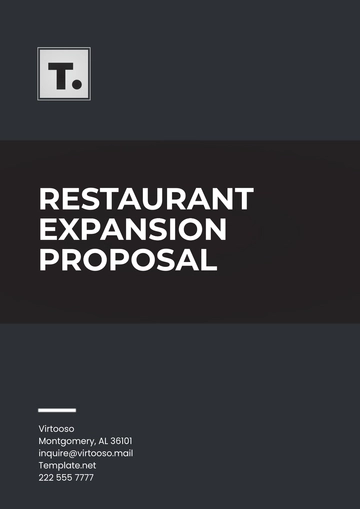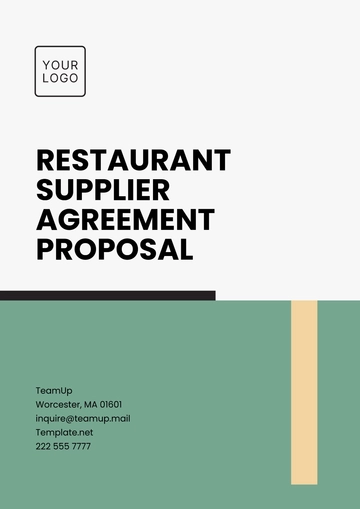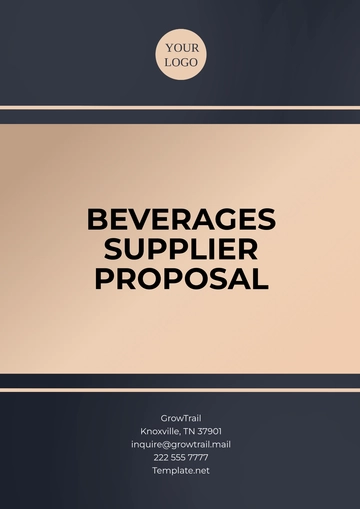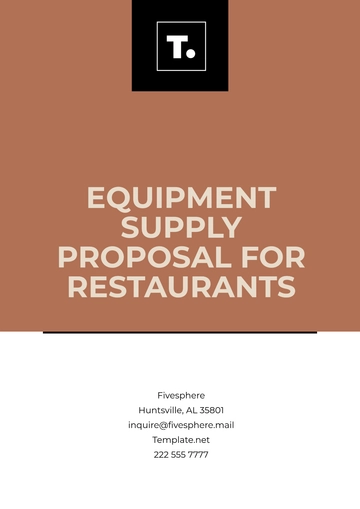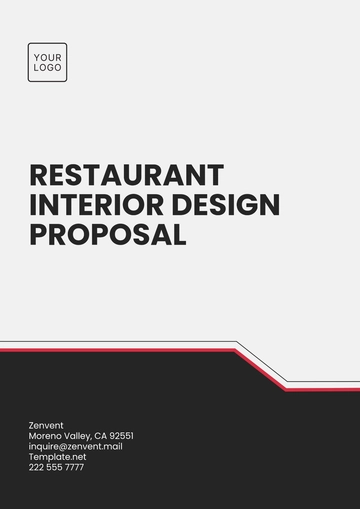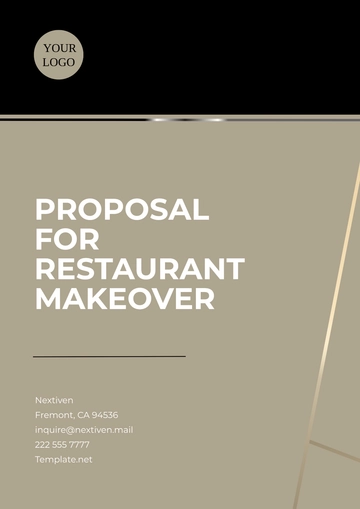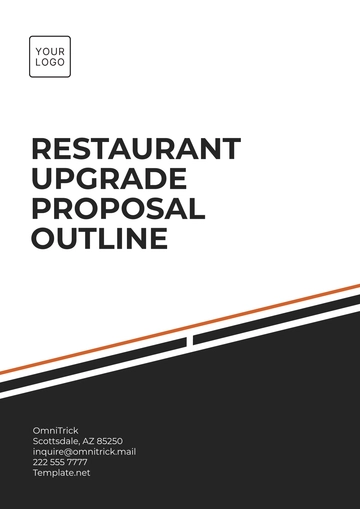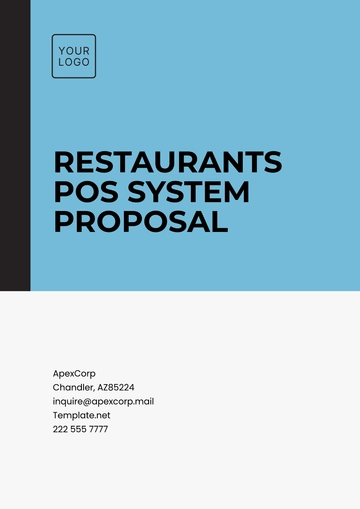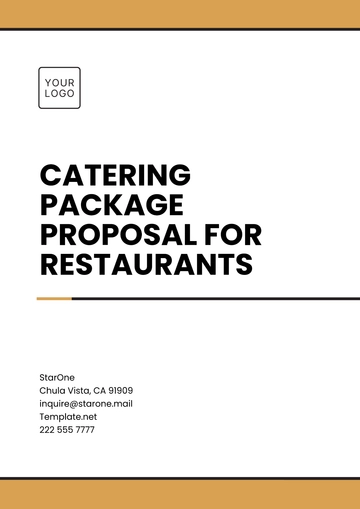Free Restaurant Marketing Recap Proposal
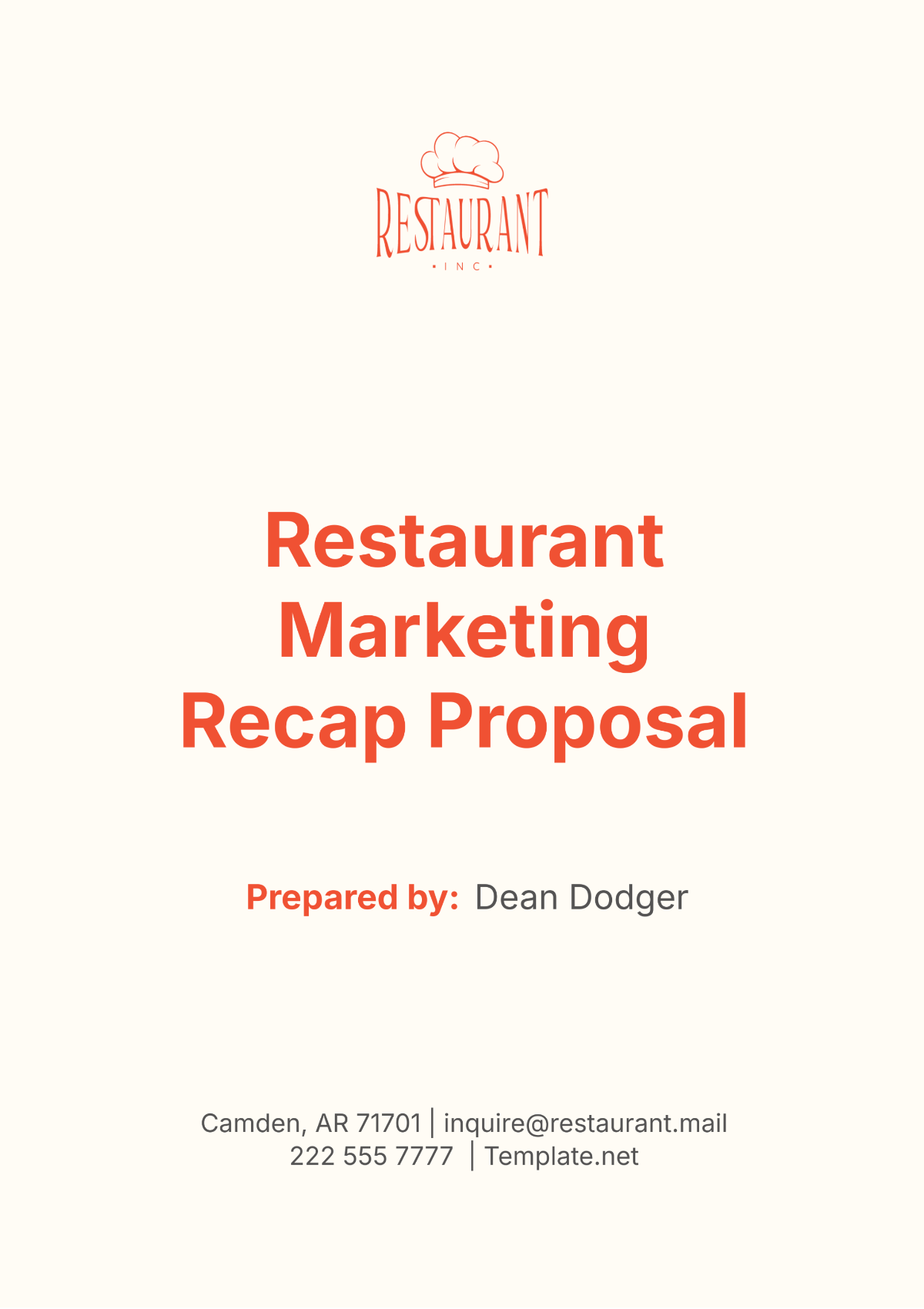
I. Executive Summary
A. Introduction
[Your Company Name], a leading restaurant in the [Your Location] area, has undertaken an in-depth analysis of our current marketing strategies and performance. This proposal aims to outline our findings and present recommendations to bolster [Your Company Name]'s marketing efforts, ultimately driving increased customer engagement and revenue growth.
B. Key Findings
Social Media Engagement: Through platforms like Instagram and Facebook, [Your Company Name] boasts a substantial online presence with 25,000 followers and an impressive engagement rate of 13%. However, there is room for improvement in leveraging these channels to their full potential.
Website Traffic: Our website analysis reveals an average of 20,000 unique visitors per month, indicating a strong online presence. However, further optimization is needed to enhance user experience and drive conversions.
Customer Feedback: While [Your Company Name] consistently receives positive feedback regarding food quality, there are opportunities for improvement in service speed during peak hours, as highlighted by 90% of customer reviews.
C. Recommendations
Strengthen Social Media Presence: Implement targeted campaigns to increase brand awareness and engagement across platforms.
Enhance Website Optimization: Improve mobile responsiveness and user experience to facilitate seamless online reservations.
Introduce Loyalty Programs: Implement a loyalty program to incentivize repeat visits and enhance customer retention.
II. Current Marketing Overview
A. Social Media Presence
Platform | Followers | Engagement Rate |
|---|---|---|
15,000 | 8% | |
10,000 | 5% |
B. Website Performance
Monthly Website Traffic: The website receives an average of 20,000 unique visitors per month.
Key Metrics:
Average Session Duration: Users spend approximately 3.5 minutes per session on the website.
Bounce Rate: The bounce rate stands at 35%, indicating decent engagement levels.
Mobile Responsiveness: About 60% of website visitors access the site via mobile devices, highlighting the importance of optimizing for mobile.
C. Customer Feedback
Satisfaction with Food Quality: [Your Company Name] consistently receives positive feedback on food quality, with approximately 90% of reviews praising the taste and presentation of dishes.
Improvement Areas: Feedback analysis reveals that around 25% of customer reviews mention concerns regarding service speed during peak hours, suggesting a need for operational enhancements to streamline service.
III. Proposed Marketing Strategies
A. Social Media Marketing
Campaign Objectives: Increase brand awareness, drive customer engagement, and promote new menu items.
Target Audience: Millennials and Gen Z, local residents, tourists visiting [Your Company Address].
Content Strategy: Share high-quality food photos and videos showcasing our menu items, behind-the-scenes content featuring our chefs and kitchen staff, user-generated content from satisfied customers, and promotional offers.
Posting Schedule: Post at least 3 times per week on Instagram and Facebook, with additional posts for special promotions or events.
B. Website Optimization
Mobile Optimization:
Implement responsive design to ensure seamless user experience across all devices.
Optimize page load speed to minimize bounce rates and improve user retention.
User Experience Enhancements:
Simplify the online reservation process with clear call-to-action buttons and intuitive navigation.
Optimize menu display for easy browsing and ordering, including high-resolution images and detailed descriptions.
SEO Optimization:
Conduct keyword research to identify relevant search terms and phrases related to our cuisine and location.
Update meta tags, titles, and descriptions to improve search engine visibility.
Enhance local SEO efforts by optimizing Google My Business listing and ensuring NAP (Name, Address, Phone Number) consistency across online directories.
C. Loyalty Program Implementation
Program Structure: Introduce a points-based loyalty program where customers earn points for every purchase, with rewards such as discounts, free items, and exclusive access to events.
Marketing Collaterals: Design loyalty cards or digital loyalty program apps for easy enrollment and tracking. Create email newsletters and social media posts to promote the program and highlight exclusive offers for members.
Integration: Integrate the loyalty program with our POS system to automate point accumulation and redemption, track customer spending behavior, and personalize promotions based on purchase history.
IV. Implementation Plan
A. Timeline
Task | Start Date | End Date |
|---|---|---|
Social media campaign launch | [Date] | [Date] |
Website optimization | [Date] | [Date] |
Loyalty program rollout | [Date] | [Date] |
B. Responsibilities
Task | Responsible Party |
|---|---|
Social media campaign | Marketing Team |
Website optimization | Web Development Team |
Loyalty program | Marketing and IT Teams |
V. Budget Allocation
A. Social Media Marketing: [$10,000]
This budget will cover various aspects of our social media marketing efforts, including sponsored posts, influencer collaborations, and targeted advertising campaigns on platforms like Instagram and Facebook. By allocating resources to these channels, we aim to increase brand visibility, engage with our target audience, and drive traffic to our website and physical location.
B. Website Optimization: [$8,000]
With this budget, we will enlist the expertise of web developers and designers to optimize our website for mobile devices, enhance user experience, and improve search engine visibility. Investments will be made in implementing responsive design, streamlining the online reservation process, and conducting SEO enhancements to attract more organic traffic and increase conversion rates.
C. Loyalty Program Implementation: [$5,000]
The allocated budget will cover the costs associated with launching and promoting our loyalty program. This includes investing in loyalty program software or app development, designing physical or digital loyalty cards, and creating promotional materials to drive awareness and enrollment. By incentivizing repeat visits and rewarding customer loyalty, we aim to foster long-term relationships with our patrons and increase customer retention rates.
D. Total Budget: [$23,000]
VI. Evaluation and Metrics
A. Key Performance Indicators (KPIs)
Social Media:
Increase in followers and engagement rate on Instagram and Facebook.
Growth in website traffic originating from social media platforms.
Website:
Increase in online reservations and conversions.
Reduction in bounce rate and improvement in average session duration.
Loyalty Program:
Increase in sign-ups and active participation.
Growth in repeat visits and customer retention rate.
B. Reporting Frequency
Monthly performance reports will be generated to track progress against KPIs and identify areas for optimization. Quarterly strategy reviews will be conducted to assess overall effectiveness and make adjustments as needed.
VII. Conclusion
[Your Company Name] is committed to implementing these strategic initiatives to elevate our marketing efforts and drive business growth. By investing in social media marketing, website optimization, and a loyalty program, we aim to enhance customer engagement, increase brand loyalty, and ultimately boost revenue. We are confident that with careful monitoring and ongoing optimization, these initiatives will contribute to the continued success of [Your Company Name]. Thank you for considering our proposal, and we eagerly anticipate the opportunity to implement these strategies together.
- 100% Customizable, free editor
- Access 1 Million+ Templates, photo’s & graphics
- Download or share as a template
- Click and replace photos, graphics, text, backgrounds
- Resize, crop, AI write & more
- Access advanced editor
Review and plan with Template.net's Restaurant Marketing Recap Proposal Template. This customizable document offers a comprehensive format for summarizing past marketing activities and proposing future strategies. Analyze campaign performance, highlight successes, and identify areas for improvement. Editable in our Ai Editor Tool for seamless customization to reflect your restaurant's marketing outcomes and strategic plans.
You may also like
- Business Proposal
- Research Proposal
- Proposal Request
- Project Proposal
- Grant Proposal
- Photography Proposal
- Job Proposal
- Budget Proposal
- Marketing Proposal
- Branding Proposal
- Advertising Proposal
- Sales Proposal
- Startup Proposal
- Event Proposal
- Creative Proposal
- Restaurant Proposal
- Blank Proposal
- One Page Proposal
- Proposal Report
- IT Proposal
- Non Profit Proposal
- Training Proposal
- Construction Proposal
- School Proposal
- Cleaning Proposal
- Contract Proposal
- HR Proposal
- Travel Agency Proposal
- Small Business Proposal
- Investment Proposal
- Bid Proposal
- Retail Business Proposal
- Sponsorship Proposal
- Academic Proposal
- Partnership Proposal
- Work Proposal
- Agency Proposal
- University Proposal
- Accounting Proposal
- Real Estate Proposal
- Hotel Proposal
- Product Proposal
- Advertising Agency Proposal
- Development Proposal
- Loan Proposal
- Website Proposal
- Nursing Home Proposal
- Financial Proposal
- Salon Proposal
- Freelancer Proposal
- Funding Proposal
- Work from Home Proposal
- Company Proposal
- Consulting Proposal
- Educational Proposal
- Construction Bid Proposal
- Interior Design Proposal
- New Product Proposal
- Sports Proposal
- Corporate Proposal
- Food Proposal
- Property Proposal
- Maintenance Proposal
- Purchase Proposal
- Rental Proposal
- Recruitment Proposal
- Social Media Proposal
- Travel Proposal
- Trip Proposal
- Software Proposal
- Conference Proposal
- Graphic Design Proposal
- Law Firm Proposal
- Medical Proposal
- Music Proposal
- Pricing Proposal
- SEO Proposal
- Strategy Proposal
- Technical Proposal
- Coaching Proposal
- Ecommerce Proposal
- Fundraising Proposal
- Landscaping Proposal
- Charity Proposal
- Contractor Proposal
- Exhibition Proposal
- Art Proposal
- Mobile Proposal
- Equipment Proposal
- Student Proposal
- Engineering Proposal
- Business Proposal
